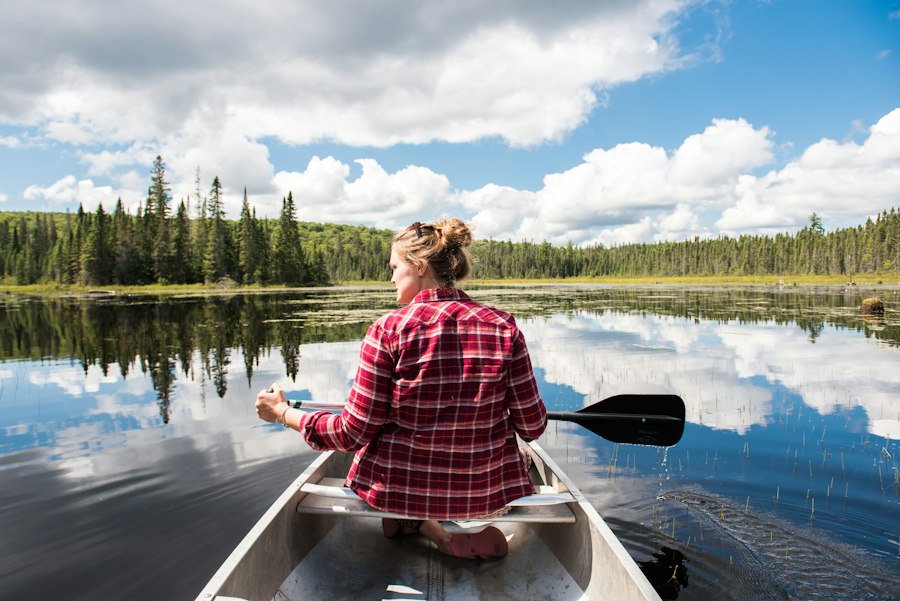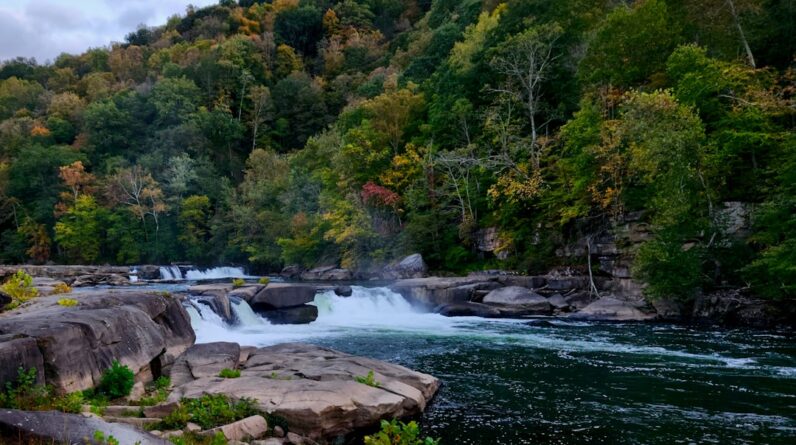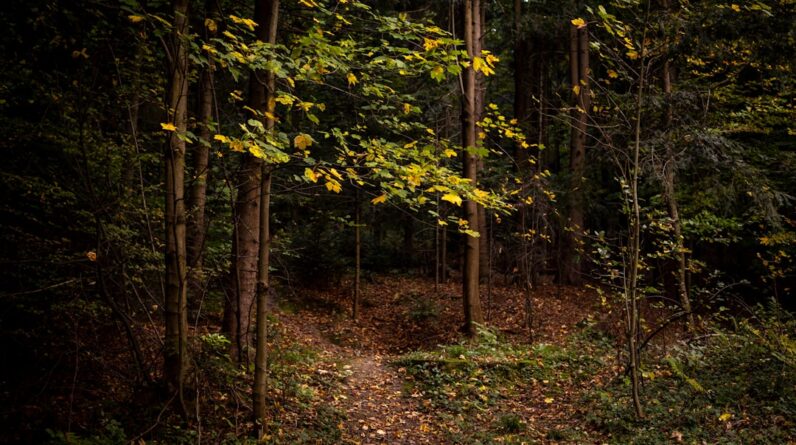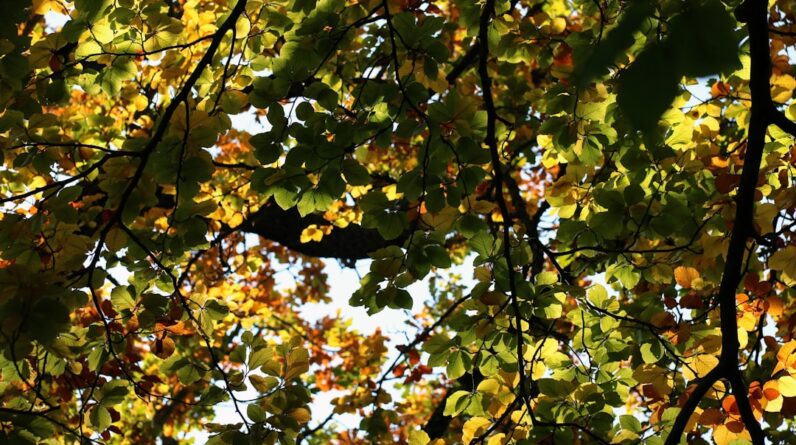Algonquin Park, located in Ontario, Canada, is a vast and breathtaking natural reserve that spans over 7,600 square kilometers. Established in 1893, it is the oldest provincial park in Canada and is renowned for its stunning landscapes, diverse wildlife, and rich history. The park is named after the Algonquin people, who have inhabited the region for thousands of years.
The geography of Algonquin Park is characterized by dense forests, pristine lakes, and meandering rivers. It is home to over 2,400 lakes and 1,200 kilometers of rivers and streams, making it a paradise for outdoor enthusiasts and nature lovers. The park also boasts a variety of ecosystems, including mixed forests, wetlands, and granite ridges.
Algonquin Park plays a crucial role in preserving the natural heritage of Ontario. It serves as a sanctuary for numerous plant and animal species, some of which are rare or endangered. The park’s protected status ensures that these species can thrive in their natural habitat without disturbance.
The park’s natural beauty and recreational opportunities make it a popular destination for outdoor enthusiasts. Visitors can engage in a wide range of activities such as canoeing, hiking, camping, fishing, wildlife spotting, and more. Algonquin Park offers something for everyone, from beginners to experienced adventurers.
Key Takeaways
- Algonquin Park is a natural wonderland with diverse wildlife and stunning scenery.
- Essential gear and safety tips are crucial for a successful canoe adventure in Algonquin Park.
- From beginner to advanced, there are canoe routes for all skill levels in Algonquin Park.
- Wildlife encounters, such as spotting moose and bears, are a highlight of visiting Algonquin Park.
- Choosing the perfect campsite and setting up camp are important for a comfortable and enjoyable camping experience in Algonquin Park.
Preparing for Your Canoe Adventure: Essential Gear and Safety Tips
Canoeing is one of the most popular activities in Algonquin Park due to its extensive network of lakes and rivers. Before embarking on a canoe trip, it is essential to have the right gear and be aware of safety precautions.
Some essential gear for a canoe trip in Algonquin Park includes a canoe or kayak, paddles, life jackets or personal flotation devices (PFDs), camping gear (tent, sleeping bag, cooking equipment), dry bags or waterproof containers, a map and compass or GPS device, and a first aid kit. It is also important to pack enough food and water for the duration of your trip.
Safety should be a top priority when canoeing in Algonquin Park. It is crucial to wear a life jacket or PFD at all times while on the water, regardless of your swimming ability. It is also advisable to check the weather forecast before heading out and to be prepared for changing conditions. Additionally, it is recommended to inform someone of your trip plans, including your intended route and expected return date.
Proper planning and preparation are key to a successful canoe trip in Algonquin Park. It is important to research the route you plan to take, including portages (sections where you have to carry your canoe and gear over land) and campsites along the way. Familiarize yourself with the park’s rules and regulations, such as fire restrictions and camping permits. By being well-prepared, you can ensure a safe and enjoyable adventure in Algonquin Park.
The Best Canoe Routes in Algonquin Park: From Beginner to Advanced
Algonquin Park offers a wide range of canoe routes, catering to both beginners and experienced paddlers. Each route has its own unique features and attractions, allowing visitors to explore different parts of the park.
For beginners or those looking for a shorter trip, the Canoe Lake Access Point offers several easy routes that can be completed in a day or two. These routes provide a taste of Algonquin Park’s beauty without requiring extensive paddling or portaging.
Intermediate paddlers may enjoy routes such as the Big Trout Lake Loop or the Tim River Loop. These routes offer a mix of lakes and rivers, with moderate portages and opportunities for wildlife spotting.
For experienced paddlers seeking a challenge, the Opeongo Lake Loop or the Brent Run Loop are excellent options. These routes involve longer distances, more challenging portages, and the opportunity to explore remote areas of the park.
Each route in Algonquin Park has its own highlights and attractions. For example, the Canoe Lake Access Point allows visitors to paddle through the iconic Canoe Lake, which was made famous by Canadian artist Tom Thomson. The Big Trout Lake Loop offers stunning views of the Barron Canyon, a breathtaking gorge carved by the Barron River. The Opeongo Lake Loop takes paddlers to the largest lake in Algonquin Park, where they can enjoy expansive views and secluded campsites.
Wildlife Encounters: Spotting Moose, Bears, and Other Animals
| Animal | Number of sightings | Location | Time of day |
|---|---|---|---|
| Moose | 12 | Yellowstone National Park | Morning |
| Bear | 8 | Great Smoky Mountains National Park | Afternoon |
| Elk | 5 | Rocky Mountain National Park | Evening |
| Wolf | 3 | Yellowstone National Park | Night |
Algonquin Park is home to a diverse array of wildlife, making it a prime destination for animal enthusiasts. One of the most sought-after sightings in the park is the majestic moose, which can often be spotted near lakes and marshy areas. Bears are also commonly seen in Algonquin Park, particularly in the spring and fall when they are searching for food.
To increase your chances of spotting wildlife in Algonquin Park, it is important to be patient and observant. Early morning and late evening are typically the best times for wildlife viewing, as animals are more active during these periods. It is also advisable to move quietly and avoid sudden movements or loud noises that could scare away animals.
Respecting wildlife and their habitat is crucial when visiting Algonquin Park. It is important to keep a safe distance from animals and never approach or feed them. Feeding wildlife can disrupt their natural behavior and create dependency on humans for food. It is also important to dispose of trash properly and avoid leaving any food or scented items unattended, as this can attract animals and create conflicts.
Camping in the Wilderness: Choosing the Perfect Campsite and Setting Up Camp
Camping is a popular activity in Algonquin Park, allowing visitors to immerse themselves in the park’s natural beauty and spend the night under the stars. The park offers a variety of campsites, ranging from frontcountry sites accessible by car to backcountry sites that require a canoe or hike to reach.
When choosing a campsite in Algonquin Park, it is important to consider factors such as proximity to water, privacy, and amenities. Some campsites offer stunning lake views or access to hiking trails, while others provide more seclusion and a true wilderness experience. It is also important to check if reservations are required for the campsite you plan to stay at, as some sites have limited availability.
Setting up camp in the wilderness requires some basic skills and knowledge. It is important to choose a flat and level area for your tent and clear away any debris or rocks that could be uncomfortable to sleep on. It is also advisable to set up your tent away from trees or dead branches that could pose a safety hazard in case of strong winds. When cooking, it is important to use designated fire pits or camping stoves and follow all fire regulations.
Exploring the Hidden Gems of Algonquin Park: Waterfalls, Caves, and More

While canoeing and camping are popular activities in Algonquin Park, there are also many hidden gems waiting to be explored. The park is home to several stunning waterfalls, including High Falls, Ragged Falls, and Hardwood Lookout Falls. These cascades offer picturesque views and are perfect for photography or simply enjoying the beauty of nature.
Algonquin Park also boasts several caves that can be explored by adventurous visitors. The most famous cave in the park is the Ice Cave, located near Rock Lake. This cave remains cool even during the summer months due to its unique geological features.
In addition to waterfalls and caves, Algonquin Park offers numerous hiking trails that lead to scenic viewpoints and lookout points. The Lookout Trail, Centennial Ridges Trail, and Mizzy Lake Trail are just a few examples of the park’s hiking opportunities. These trails provide a chance to immerse yourself in the park’s wilderness and enjoy panoramic views of the surrounding landscapes.
While exploring these hidden gems, it is important to respect the natural environment and follow Leave No Trace principles. This includes staying on designated trails, not disturbing wildlife or their habitats, and properly disposing of any waste or litter.
Fishing in Algonquin Park: A Guide to the Best Spots and Techniques
Algonquin Park is a paradise for fishing enthusiasts, with its numerous lakes and rivers teeming with fish. The park offers opportunities for both shore fishing and fishing from a canoe or kayak.
Some of the best fishing spots in Algonquin Park include Canoe Lake, Smoke Lake, and Lake Opeongo. These lakes are known for their populations of smallmouth bass, lake trout, and northern pike. It is important to check the park’s fishing regulations and obtain the necessary licenses before casting your line.
When fishing in Algonquin Park, it is important to use responsible fishing practices. This includes practicing catch-and-release whenever possible, using barbless hooks to minimize harm to fish, and following size and possession limits. It is also important to properly dispose of any fishing line or tackle to prevent wildlife entanglement.
Paddling at Night: A Unique and Memorable Experience
Paddling at night in Algonquin Park offers a unique and memorable experience that allows visitors to see the park in a different light. The absence of artificial light pollution provides an opportunity to stargaze and observe nocturnal wildlife.
Before embarking on a night paddle, it is important to ensure you have the necessary equipment for navigation and safety. This includes a headlamp or flashlight with a red filter (to preserve night vision), a whistle or horn for signaling, and reflective tape or markers on your canoe or kayak for visibility.
Paddling at night requires extra caution and awareness of your surroundings. It is important to stay close to shore and avoid areas with strong currents or obstacles. It is also advisable to paddle with a partner and inform someone of your plans.
Respecting the natural environment is crucial when paddling at night. It is important to minimize noise and disturbance to wildlife, as many animals are more active during the nighttime hours. Additionally, it is important to avoid shining lights directly into the water, as this can disrupt aquatic ecosystems.
Meeting Local Indigenous Communities: Learning About Algonquin Culture and History
Algonquin Park is located within the traditional territory of the Algonquin people, who have inhabited the region for thousands of years. The park provides an opportunity to learn about Algonquin culture and history through interactions with local Indigenous communities.
There are several Indigenous communities near Algonquin Park that offer cultural experiences and educational programs. Visitors can participate in guided tours, storytelling sessions, traditional crafts workshops, and more. These experiences provide insights into the rich heritage of the Algonquin people and their deep connection to the land.
When interacting with Indigenous communities, it is important to approach with respect and an open mind. It is advisable to seek permission before taking photographs or recordings, as some cultural practices may be considered sacred or private. It is also important to listen attentively and ask questions respectfully, while being mindful of cultural sensitivities.
Sustainable Tourism in Algonquin Park: How to Minimize Your Impact on the Environment
As a natural reserve, Algonquin Park relies on sustainable tourism practices to protect its fragile ecosystems and preserve its natural beauty for future generations. Visitors can minimize their impact on the environment by following a few simple guidelines.
One of the most important principles of sustainable tourism is leaving no trace. This means packing out all trash and litter, including food scraps and cigarette butts. It is also important to dispose of waste properly, using designated garbage and recycling bins.
Respecting wildlife and their habitats is another crucial aspect of sustainable tourism. It is important to observe animals from a safe distance and avoid feeding or approaching them. It is also important to stay on designated trails and avoid trampling vegetation or disturbing nesting sites.
Conserving water is another important aspect of sustainable tourism in Algonquin Park. Visitors can do this by using water sparingly, taking shorter showers, and turning off taps when not in use. It is also advisable to bring reusable water bottles and refill them at designated water stations.
By practicing sustainable tourism in Algonquin Park, visitors can help protect the park’s natural heritage and ensure that future generations can continue to enjoy its beauty.
If you’re planning a canoe adventure in Algonquin Park, you might also be interested in learning about the importance of hydration for aging bodies. Staying hydrated is crucial for overall health and well-being, especially as we age. In this informative article, you’ll discover the power of hydration and how it can benefit your body as you navigate through the beautiful wilderness of Algonquin Park. Check out the article here to learn more.








